
Lepidosperma longitudinale is commonly known as the pithy sword-sedge or pith saw-sedge. It is an evergreen species of sedge that is native to swampy areas of most Australian states. It was described by French botanist Jacques Labillardière in 1805.

Lepidosperma laterale, commonly known as the variable swordsedge, is a plant found in south-eastern Australia, New Caledonia and New Zealand. It is often found on sandy soils or rocky areas in wooded areas.
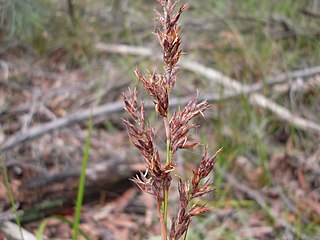
Lepidosperma concavum, commonly known as the sandhill sword-sedge, is a plant found in coastal regions of south-eastern and eastern Australia. It grows on sandy soils in woodland, forest and heathland.

Machaerina insularis is a flowering plant in the sedge family. The specific epithet is the Latin insularis, alluding to its island home.

Carex eburnea, known as ivory sedge, ebony sedge, and bristleleaf or bristle-leaved sedge, is a small and slender sedge native to North America, from Alaska and Newfoundland south to central Mexico.

Machaerina juncea, commonly known as bare twig-rush or tussock swamp twig rush, is a sedge in the sedge family, Cyperaceae, that is native to Australia, New Zealand, and New Caledonia.
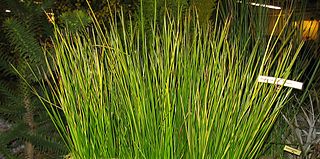
Machaerina rubiginosa, commonly known as soft twig rush, flat leaf twig rush or common twig rush, is a flowering plant in the sedge family, Cyperaceae, that is native to Asia and the Pacific.
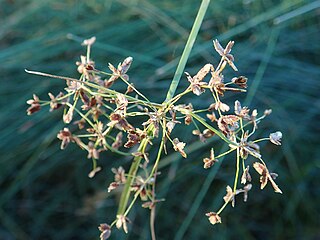
Cyperus concinnus is a sedge of the family Cyperaceae that is native to Australia, and found in New South Wales, Queensland, the Northern Territory, South Australia, Victoria and Western Australia.
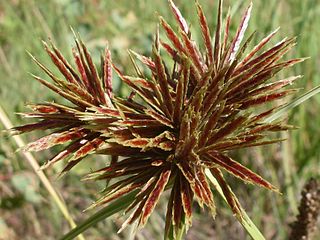
Cyperus congestus, commonly known as dense flat-sedge or clustered flat-sedge, is a sedge of the family Cyperaceae that is native to southern Africa mostly in South Africa, Lesotho and Namibia.
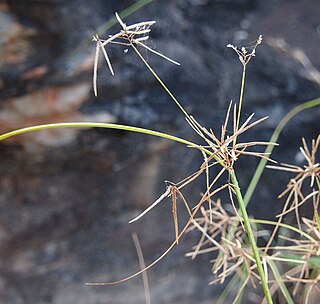
Cyperus dactylotes is a sedge of the family Cyperaceae that is native to all of mainland Australia except for Victoria.
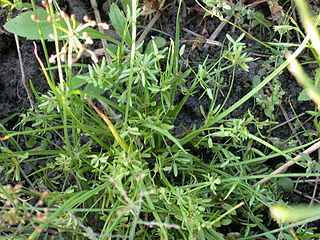
Cyperus flaccidus is a sedge of the family Cyperaceae that is native to Australia.

Cyperus gilesii, commonly known as Giles' flat-sedge, is a sedge of the Cyperaceae that is native to Australia.
Cyperus nutans is a sedge of the family Cyperaceae that is native to Australia, China, India, Bangladesh, south-east Asia, Malaysia, India, and Indonesia.
Cyperus victoriensis, also known as channel nut grass is a sedge of the family Cyperaceae that is native to all the states and territories of mainland Australia.

Carpha alpina, commonly known as small flower-rush, is a tufted perennial sedge from the family Cyperaceae. It is found primarily in south-east Australia and both islands of New Zealand, but also in Papua New Guinea.

Fimbristylis velata is a species of sedge native to the North Island of New Zealand and Australia, where it is found in Western Australia, New South Wales, the Northern Territory, Queensland, Victoria, and South Australia.

Carex breviscapa is a tussock-forming perennial in the family Cyperaceae. It is native to eastern parts of the south east Asia and north eastern Australia
Carex helferi is a tussock-forming species of perennial sedge in the family Cyperaceae. It is native to parts of South East Asia.
Carex interrupta is a tussock-forming species of perennial sedge in the family Cyperaceae. It is native to south eastern parts of Canada and north eastern parts of the United States.
Carex cephalotes, also known as wire-head sedge, is a tussock-forming species of perennial sedge in the family Cyperaceae. It is native to south eastern Australia and New Zealand.















